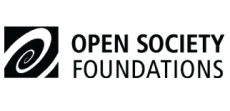Book Review: The Oxford Handbook of Refugee and Forced Migration Studies
Posted
Time to read
Guest post by Julia Pacitto, doctoral student at the Refugee Studies Centre and the Oxford Department of International Development, University of Oxford.
Review of The Oxford Handbook of Refugee and Forced Migration Studies, edited by Elena Fiddian-Qasmiyeh, Gil Loescher, Katy Long, and Nando Sigona (Oxford University Press, 2014).

Part I presents the different disciplinary approaches that have been taken in relation to the study of forced displacement, charting significant contributions from an array of disciplines from international relations and political theory to geography and anthropology, amongst others. Jerome Elie’s chapter on the history of refugee and forced migration studies calls for an end to the relative neglect of this field of study by historians, and argues for a re-historicisation of displacement.
Part II aims to disrupt and reimagine traditionally held assumptions about the spaces and scenarios of displacement. This section, and the contributions therein, reflect the broad scholarly and institutional shift from equating displacement with refugees and encampment in the global south to considering other temporal and geographic contexts of displacement. The chapters address issues from rural and urban self-settlement to internal displacement, transnationalism to protracted displacement, and the ‘illegalisation’ of refugee movements, especially towards the global north.
Part III situates itself at the interstices of legal, political, and institutional responses to forced migration, providing an overview of the different legal and institutional regimes governing forced migration, engaging with state responses to displacement and identifying key contemporary protection gaps within this broader context.
Following this, Part IV addresses ‘root causes’ of displacement, a topic that has gained much salience since the beginning of 1990s when the attention of states began to shift towards ‘drivers’ of forced migration. Its contributors have, however, attempted to problematise the state-centric and interest-driven origins of this important facet of forced migration studies, and have moved beyond notions of mono-causality to explore the multi-level, multifarious elements that make up processes of (im)mobility.
Part V goes on to engage with another of the key debates in refugee and forced migration: lived experience, representation, and agency. The chapters within this section range from explorations of the complex concept of ‘refugee voices’ and popular representations of refugees and asylum seekers, to investigations into the ways in which key identity characteristics, such as gender, age, and (dis)ability relate to the lived experiences of forced migrants.
Part VI examines, and critically assesses the trinity of existing ‘durable solutions’ for refugees: local integration, resettlement, and voluntary repatriation. Contributions to this section encourage us to learn from the ways in which these ‘solutions’ have been enacted in practice, and ask us to look beyond the existing framework to consider other ways in which refugees could, and indeed are, alleviating the conditions of their displacement. The final part provides a number of broad overviews of different geopolitical regions, helping readers to contextualise different forced migrations and refugee movements according to the social, legal, political, and historical landscape in different parts of the world.
As this brief overview suggests, the book covers a vast array of issues and debates in this ever-growing domain of study. Given that this is a field that coalesces around the unifying aim of understanding and addressing human experiences of displacement, it remains closely linked to policy and praxis. The age-old tension in refugee and forced migration studies between exhibiting theoretically rigorous work that satisfies the demands of the academy, and creating policy-relevant work is well reflected in the content of the book. Contributions vary from explicitly policy- or action-focused research to interpretive frameworks and theory development, with many offerings nestled somewhere in-between. Indeed, in the foreword to the book, UN High Commissioner for Refugees Antonio Guterres rightly praises the Handbook for ‘the bridges it helps build between academic study and…everyday fieldwork and advocacy in forced displacement.’
The impressive breadth of the book makes it a great teaching tool and reference for both teachers and students of forced migration. The Handbook fills a significant gap by providing an excellent reference text for those seeking a broad introduction to the field. Through assembling a diversity of perspectives into coherent and well-organised themes, the Handbook also helps us to consider the scope for dialogue across diverging disciplines and approaches within academia. It thus contributes to Lischer’s call (in this volume) for scholars to break out of the narrow boundaries of discipline and methodological approach, learn from the positive contributions of different types of scholarship and recognise the benefits of complementarity between different disciplines, regional foci and approaches. As such, the book provides a foundation upon which future generations of scholars can forge new and exciting paths for research in refugee and forced migration studies.
One potential limitation to creating a book with such great breadth, however, is that some of the depth that makes forced migration, as a facet of human experience, so compelling risks being lost. Indeed, for all that scholars across the social sciences, as well as in the humanities, have sought to emphasise the agency and capacity of refugees, the voices of refugees remain somewhat elusive in this edition. Despite a specific section dedicated in part to ‘lived experiences,’ and a chapter examining ‘the politics’ of refugee voices, the space afforded to individual, or indeed collective, ‘refugee voices’ within this book is limited, with only a small number of authors allowing space for the words of refugees and other displaced persons within their contributions. Although this is perhaps a compromise that has been necessary in order to provide the breadth of scope that a book of this kind requires, this relative absence is nevertheless notable, especially given that a significant number of scholars in this field have long sought to privilege (although not necessarily unproblematically) refugees’ voices and aesthetic expressions.
Further, although refugee and forced migration studies is described as a ‘global field of interest,’ out of 59 contributors, only five were located at universities or institutions in the global south at the time of writing. This imbalance seems quite pointed when held against the widely acknowledged reality that the vast majority of refugees and other displaced persons are located in the global south, and given the editors’ recognition that many academics working in this field are located in institutions in the south. However, this is perhaps simply a reflection of the enduring influence―despite gains in scholarship emanating from institutions in the south―of northern universities and institutions in the field more generally. Lastly, despite one contributor explicitly stating that researchers have questioned the disproportionate focus on UNHCR in the history of refugee studies and have called for an increased focus on other organizations and non-state actors, nearly all of the practitioner-contributors to the volume work for UNHCR. It is possible that a more diverse set of organisational perspectives may have further contributed to the richness of this edition.
Nevertheless, as a wide-ranging and forward-thinking contribution that is the first of its kind in this field, The Oxford Handbook of Refugee and Forced Migration Studies has certainly achieved its goal of providing an accessible, yet academically rigorous resource for practitioners, policy makers, academics, and students working on refugee and forced migration issues.
Any thoughts about this post? Get in touch with us! Send us an email, or post a comment here or on Facebook. You can also tweet us.
__________
How to cite this blog post (Harvard style):
Pacitto, J. (2015) Book Review: The Oxford Handbook of Refugee and Forced Migration Studies. Available at: http://bordercriminologies.law.ox.ac.uk/book-review-oxford-handbook/ (Accessed [date]).
Share
YOU MAY ALSO BE INTERESTED IN
With the support of









